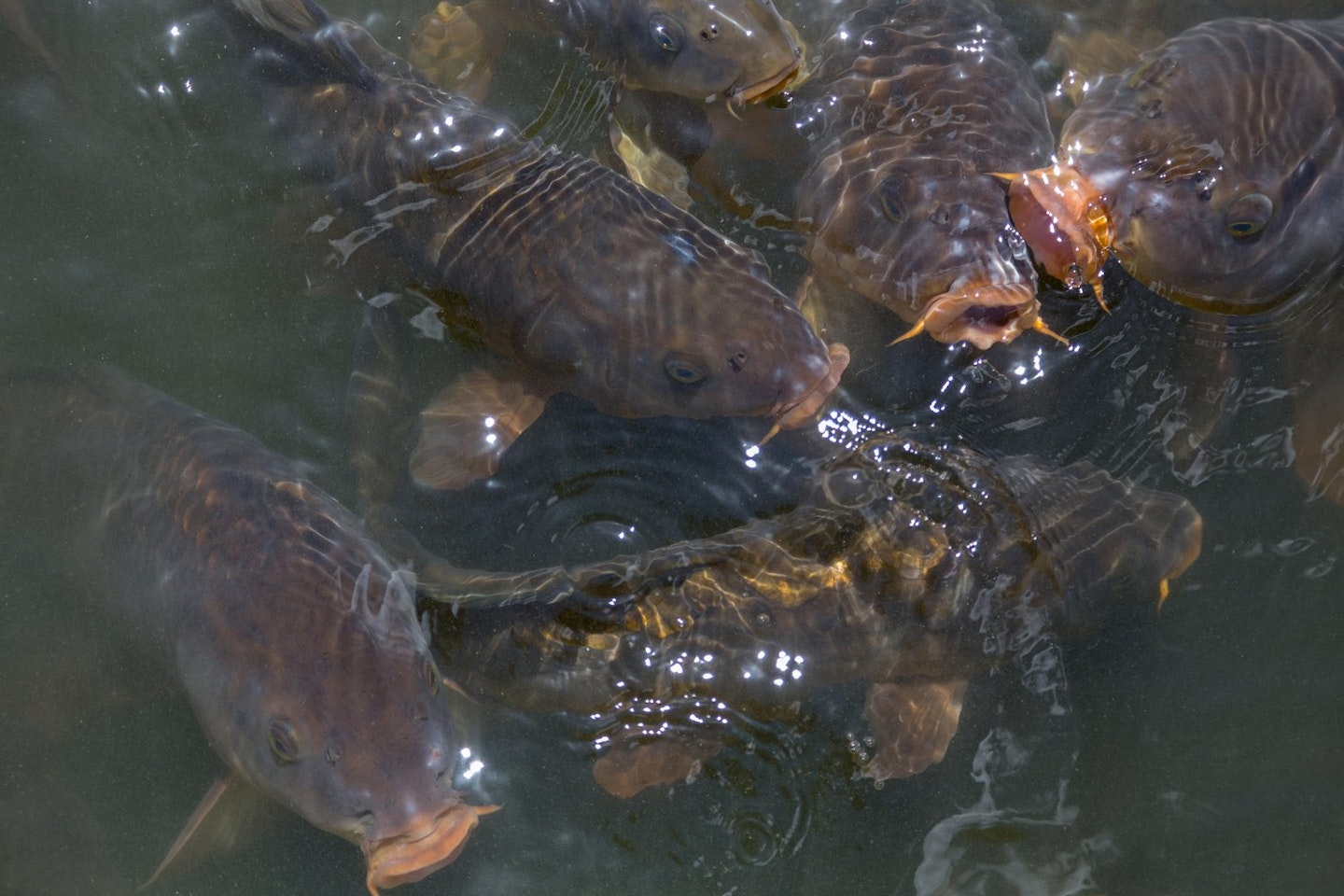For as long as fishing has existed, anglers have looked for the Holy Grail of baits and additives. From bloodworm bans to claptrap about fish getting “drugged” on hemp, surely we’ve been here before? Or could the whole bait arms race have hit a dangerous new level?
As far as the rumours go, a number of anglers were accused of dabbling with chemicals closer to farming and aquaculture than bait stockists. Reports ranged from bizarre fish behaviour to inexplicable hauls of carp from unfancied spots.
With social media and message boards awash with claims, counter claims, rumours and accusations – many of which have since been removed – it begs the question whether there’s a smoking gun at all.
It’s time we looked at real evidence and expert opinion, rather than hearsay or trial by Facebook.

Authorities remain sceptical
Although few experts were willing to go on record, those we spoke to doubted the efficacy of substances such as breeding hormones in an angling context. However, there was unanimous agreement about the risks posed by anglers experimenting with dangerous chemicals.
The legal implications alone are a minefield, with fishing bans a possibility, as well as risks to reputations and careers.
The Environment Agency stated that while it had received no direct reports, “the use of any products not approved or licensed for fishing could potentially be harmful to fish populations, the environment and human health.”
The EA also urged anglers to remember that “it is an offence under the Environmental Permitting Regulations to cause or knowingly permit entry or discharge of poisonous, noxious or polluting matter to waters”, and that any reported incidents would be investigated.
Not worth the risk!
Among the fish farmers and fishery owners we spoke to, virtually every one warned of the serious potential consequences, from harm to fish, wildlife and humans, to fishery bans and potential legal action against anyone caught meddling with inappropriate substances.
Competition anglers were also quick to stamp on rumours and stand up for fair play. “It seems like Chinese whispers gone mad,” said Carp Team England manager Rob Hughes. “I couldn’t find one shred of actual evidence, but it shows the power of the rumour mill across social media.
“Sadly, some anglers may now start looking for their own ‘unicorn’ and try things they shouldn’t. Let’s hope not. There are plenty of edges already in the bait chain, but ultimately there’s no substitute for access to waters, time and skill.”
The scientific angle: is there any truth?
While various substances are used to stimulate carp to grow or spawn in aquaculture, significant doubts remain about their viability for fishing, to say nothing of the difficulty of legitimate sourcing. All licensed UK bait sold falls under strict legislation, too, quickly ruling out harmful, untested ingredients.
Our own investigations reveal a few possible suspects, none of which seem well suited to angling. But, to be on the safe side, we’ve avoided using real names.
Substance A is a hormone that stimulates a pheromone release to attract male fish during spawning. Described as ‘Lynx Africa for carp’, it works even in tiny quantities and has been used in Australia to assist carp culls. But you can’t just add it to a spod mix, because it works by being injected into carp! Aside from cost and availability, it won’t force fish to feed, and poses major health risks for humans.
Substance B is used to trigger spawning behaviour or produce all-female stock. But it carries huge risks and no overwhelming benefits. It wouldn’t get fish queuing in your swim, and even if it did, there’s no guarantee they’d feed. As one expert put it: “Just because you’d had 10 Viagra pills, doesn’t mean you’d binge on pizza.”
Lastly, we have growth hormones used in farming. Results vary hugely, and they require qualified expertise. Inappropriate use could actually harm your results as well as the environment, begging the question: is anyone really that stupid?

What the industry really thinks...
Adam Penning - Top carp angler
“This seems like a case of people catching more than others, so they must be doing something others can’t. I don’t buy into it, there’ll always be some anglers who are much better than others. There are perfectly legitimate edges people can stumble on and have incredible results with. I’ve seen lakes turned over on sweetcorn or even small cubes of luncheon meat. We need to stamp these rumours out, as it will ruin the credibility of all future big carp catches. Do I think these products are being used? No. If I thought something like this existed, would I use it? Also no.”
Anthony Campbell - Fish farmer and fishery owner
“First and foremost, hormones shouldn’t be introduced into water. However, I’m yet to see evidence of this happening. As importers of one of the rumoured products for fish farming, we contacted the suppliers who gave this statement: ‘There are no properties of our product that we are aware of that would function as an attractant.’ My worry is that now this has exploded, we’ll see people trying to get hold of something that likely doesn’t even work, and is potentially dangerous.”
Ian Wellby - Fishery management consultant
“I can’t get to grips with the debate as it all appears to be a very blurry storm in a tea cup. I can see the concept, as fish use smell and pheromones as a way to attract and communicate with each other. These don’t, however, then trigger a feeding response. There’s no logic, therefore, in most of these rumoured products working. The worry is, we may end up creating a problem that isn’t there.”
